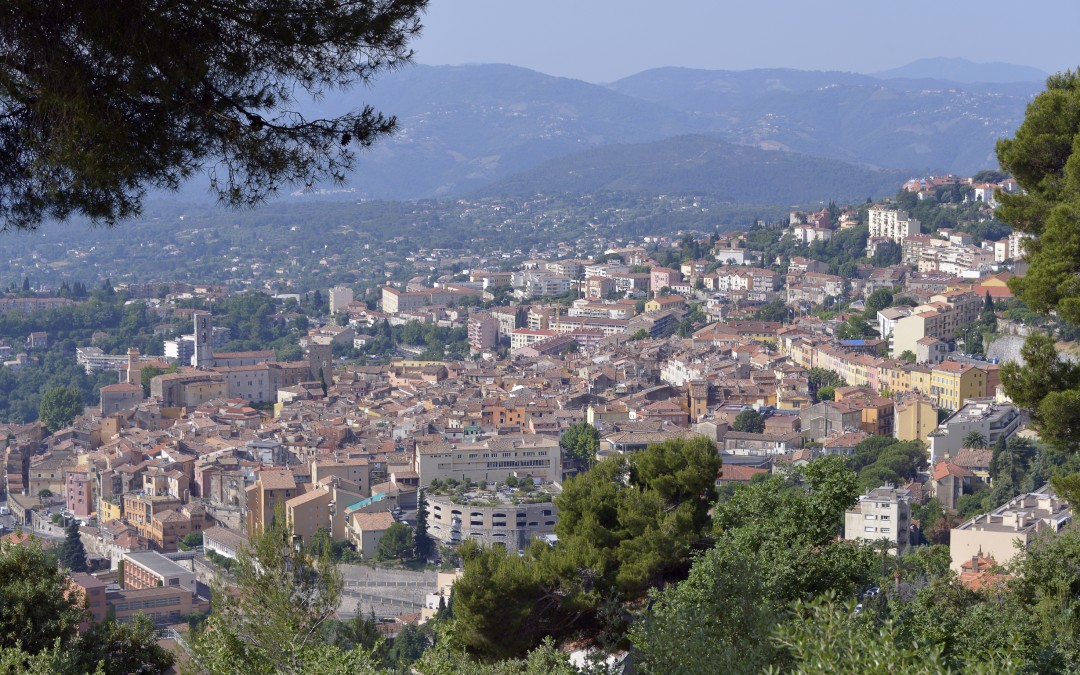Indulge in the French Fragrance Capital of Grasse

August 7, 2017
At nearly 1,150 metres above sea level, Grasse enjoys a particular microclimate that takes the best from its surroundings.
It’s only a 30-minute drive from the French Riviera and so it basks in the same 300 days of sunshine per year for which the Côte d’Azur is famed. Yet the altitude makes for mild breezes and cooler evenings, and constant streams of fresh mountain water trickle through the area, hydrating the mineral-rich, clay-and-limestone soil and echoing the sounds of the numerous stone fountains which adorn Grasse’s cobbled squares.
This unique combination of qualities means that, today, Grasse is a sublime holiday destination but it’s also made it a highly prosperous town for centuries. Although its first buildings were built during the Middle Ages and the town was originally a medieval centre for tanning hides, the sweet-smelling scents which linger in the air pay testament to Grasse’s defining industry, of which it’s the undisputed world capital: perfume making.
A Perfumed History – The Italian Renaissance fashion for scented leather gloves reached the tanneries of Grasse in the early 1600s, and the townspeople began to plant fields of hyacinths, jasmine, tuberose and Centifolia roses. The Montpellier School of Pharmacy, an influential chemistry centre producing perfumed ointments designed to combat contagious illnesses, was instrumental in the development of raising perfume-making into an art form in Grasse.
The town’s combination of ideal terroir, trade and artistry propagated by its most famous parfumerie’s namesake – the Rococo painter Jean-Honoré Fragonard – created an industry which flourished well into the 20th century. Grasse still accounts for 48 per cent of France’s perfume manufacturing, although the annual yield of jasmine flowers has decreased from a peak of 1,800 tonnes (in 1930) to just 27. Despite today’s low yield, the high quality of Grasse’s harvest still attracts parfumiers from Paris’s top fashion houses.
Only one traditional artisan parfumerie, Robertet, is left in Grasse but 35 Centifolia rose and seven jasmine fields remain – their bounty destined for the maisons of Chanel and Dior – and their fragrances faintly perfume the town. Grasse’s historic former perfume factories are also still softly imbued with scents, and the countless rose bushes and orange trees lining the roads add extra top and base notes to the town’s everyday fragrance.
Tuscan Influence – Architecturally, Grasse feels almost Tuscan, with terracotta-hued townhouses sporting pastel-painted shutters that are six or seven storeys high. The houses were built thusly as the town’s medieval ramparts were too limited to contain the growing populace during the prosperous 17th and 18th centuries. They flank narrow, cobbled alleys and stone staircases, and the entire ville wraps around the steep hillside, in layered levels of quaint squares and walled, flower-thronged gardens.
Despite Grasse’s serene ambiance, the average age of its citizens is the youngest in the Alpes-Maritimes region, and there’s plenty going on. The majority of the region’s golf courses are located in the area, and horse riding and tennis are available in the verdant surrounding campagne.
Yet it’s still perfume which entices visitors to Grasse. The famous manufacturer Fragonard, which first opened its doors in 1926, now provides guided tours that reveal the tricks of the trade. Fragonard’s traditional factory also houses an impressive exhibition which outlines, with the aid of precious artefacts from all over the world, the 5,000-year history of perfume – from Ancient Egypt and Rome, to modern-day production.
Visitors can also book onto a ‘Perfumer’s Apprentice’ course at one of Fragonard’s on-site laboratories, which enables students to create their very own scent using a ‘perfumer’s organ’, with expert guidence on hand.
Floral Festivals – The best time to visit Grasse is during one of the two major annual events which are mounted to celebrate its historic perfume industry. Each May, some 50,000 roses are imported from all over France and Italy for the four-day Expo Rose, during which this venerable capital of perfume is festooned with thousands of garlands.
Each August, the annual Fête de Jasmine takes place under the heat of the high summer sun. The festival was first held in 1946, when it consisted of concerts, exhibitions, fireworks and dancing. Two years later, highly decorated, horse-drawn floats made their first appearance, carrying beautiful young women who would throw armfuls of jasmine flowers into the crowd. Today there are over a dozen floral floats, from which thousands of flowers are thrown, instigating a ‘flower battle’ on the streets of Grasse. Upping the ante, local fire fighters douse festival spectators in jasmine water, before the proceedings conclude with a picnic, firework display and the election of a ‘Miss Jasmine’.
Grasse’s artistic heritage extends beyond the art of parfumerie and the Cathédrale Notre-Dame-du-Puy de Grasse keeps an unexpected secret: three huge oil paintings by Rubens, depicting three of the 14 Stations of the Cross. Don’t leave Grasse without popping in to admire them. You should also be sure to follow the town’s winding streets to one of several panoramic viewpoints of the valley below, which boasts olive groves and flower fields that stretch all the way to the bays of Cannes and Théoule. It’s a Provençal vista that adds yet another dimension to Grasse’s timeless appeal.
Richard Reeves is the founder of Essential Sailing and if you have been inspired to relax on a luxury sailing holiday, why not make this idyllic world your reality.
 For access to our special deals, discounts and promotions, please complete the form opposite; and, when you book your holiday, we will fit you out with our FREE Essential Sailing designer sailing jacket.
For access to our special deals, discounts and promotions, please complete the form opposite; and, when you book your holiday, we will fit you out with our FREE Essential Sailing designer sailing jacket.
